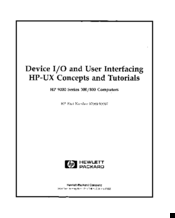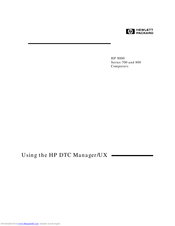HP HP 9000 Series 800 Manuals
Manuals and User Guides for HP HP 9000 Series 800. We have 2 HP HP 9000 Series 800 manuals available for free PDF download: Tutorials Manual, Manual
HP HP 9000 Series 800 Tutorials Manual (306 pages)
Device I/O and User Interfacing HP-UX Concepts and Tutorials
Table of Contents
Advertisement
Advertisement

